Features and device of electromagnetic latches
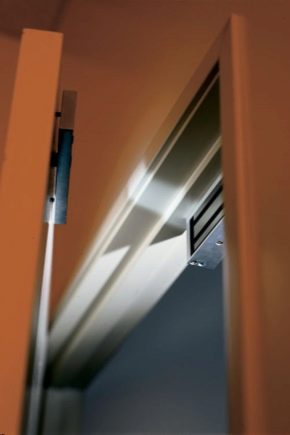
When doors are installed, they are expected to close tightly. This task is assigned to door locks. Important criteria for choosing a locking mechanism are its reliability and durability. These conditions are met by electromagnetic latches.
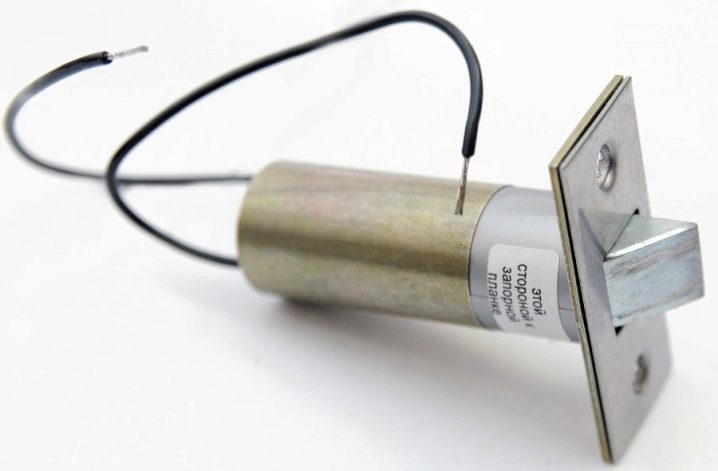
They can be used on all types of door devices - on massive gates and wickets, on front doors and those that are installed between rooms.
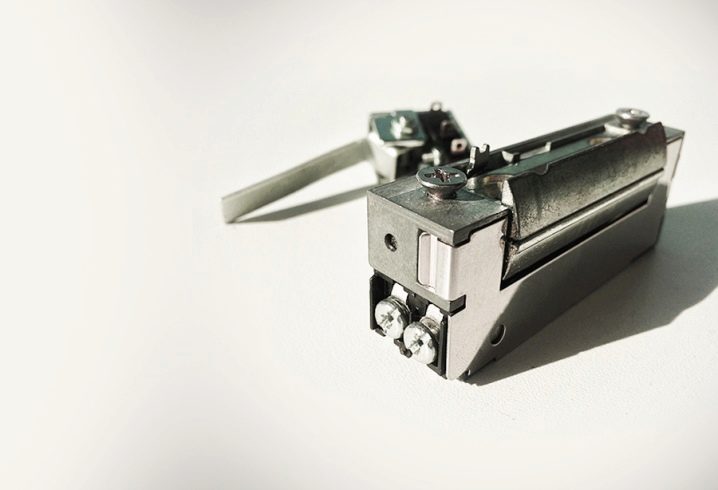
The principle of operation and design of the device
The electromagnetic lock is distinguished by its simplicity of design - it is based on a core with a winding, laid in a special case. The core is a large number of low magnetic strength electrical steel sheets. Residual stress is reduced by paintwork.
The core shape is usually W-shaped. A winding is a simple coil around which a copper wire is wound. The conductor is covered with insulation.
The body of the device is most often made of aluminum or steel. Plastic models are rarely found, but they are inferior to metal ones in terms of reliability and durability.
The operation of the product is based on electromagnetic laws. When current is applied, the magnetic elements are triggered. Power of 5 W is enough to securely hold doors weighing up to 150 kg.
The alternating current acts on the electromagnetic circuit formed when the device is connected and disconnected. The charging process through the electric winding takes place with the assistance of a capacitor, as a result of which the polarity of the magnet changes. Remagnetization is performed by residual current.
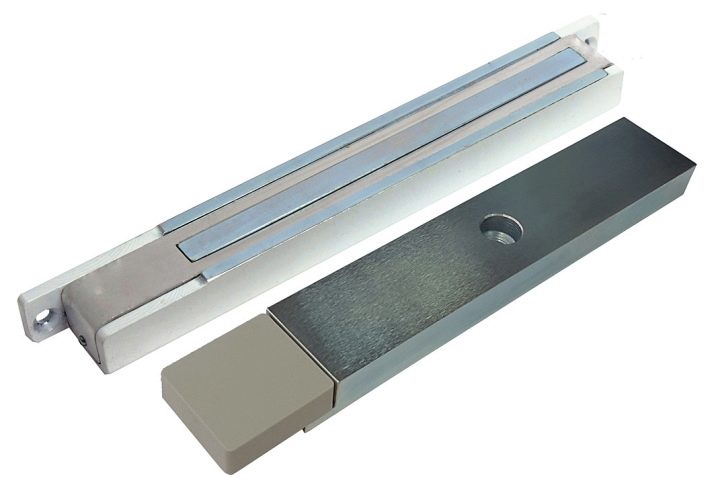
The capacitor is one of the main elements of the EMZ (electromagnetic latch). If it breaks, it is difficult to unlock the doors. In this situation, replacing the damaged part will help.
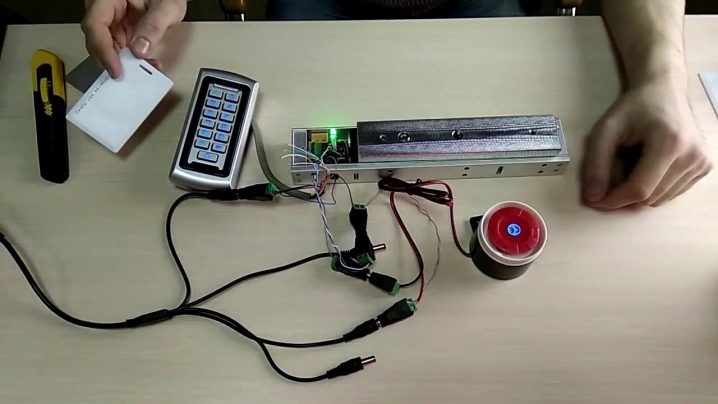
Types of devices
EMP can be subdivided into three parameters: locking method, regulation method and mounting option. According to the locking method, electromagnetic locks are divided into holding and sliding.
- Retainers. The principle of operation of the armature of the mechanism is for separation. Most often they are executed in the form of overhead models, but there are also mortise EMZs (unpopular due to their low adhesion index).
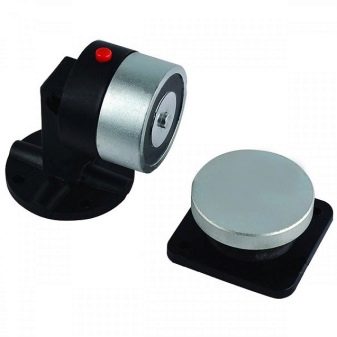
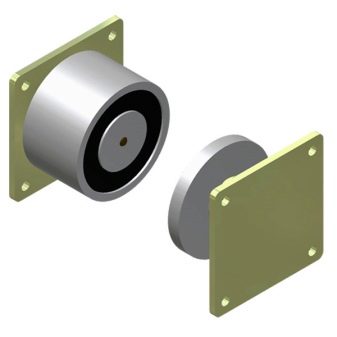
- Sliding. The functioning of the locking mechanism is based on the shift of the armature. Mortise sliding EMZ are usually found. The installation and installation of such devices requires the utmost care and strict adherence to the instructions.
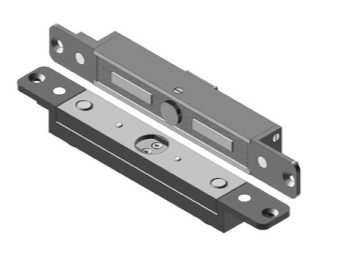
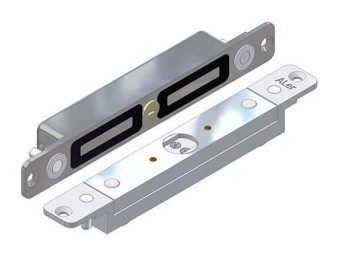
The EMR also has significant differences in the control method.
- Hall sensors. The product is manufactured in the form of a chip and requires additional power supply.
- With reed switch elements. Control does not require current supply. The device is closed with a magnet, while maintaining the desired voltage level.
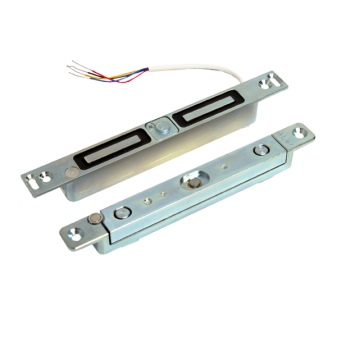
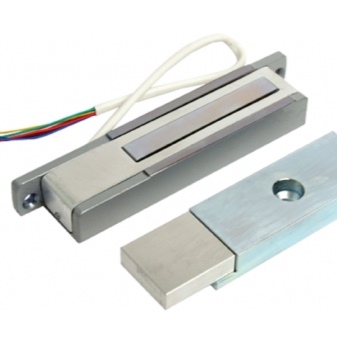
According to the mounting option, there are three types of devices.
- Overhead EMZ. Fixation is carried out by means of metal corners and does not depend on the location of the handle.
- Semi-cut. The main part is hidden in the cavity of the door leaf, but some elements form a protrusion above the surface.
- Mortise electromagnetic latches are completely inside the door.
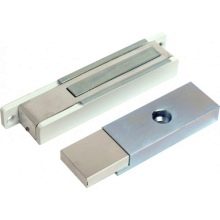
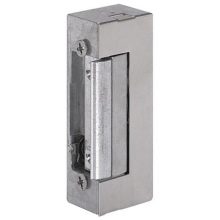
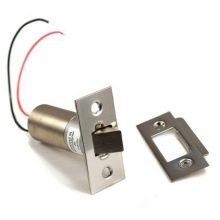
Advantages and disadvantages
Like all devices, electromagnetic locks have a number of advantages and disadvantages. Pros of using EMR:
- lack of noise during operation;
- long service life;
- can be combined with intercoms, code panels and similar devices;
- the appearance of the device meets modern aesthetic requirements.
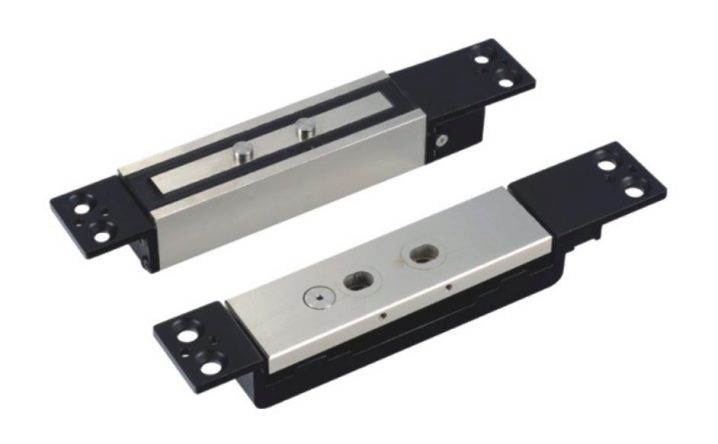
Minuses:
- large size and weight of the product;
- the supply of current (voltage) must correspond to the required level;
- once broken, the mechanism is very easy to open again.
Dependence on the power supply can be attributed to both the advantages and disadvantages of the device. In the absence of electric current, the EMZ opens. For fire safety, this is a plus in the event of a force majeure situation in a place of large gathering of people, and to protect the premises from unauthorized entry - a minus.
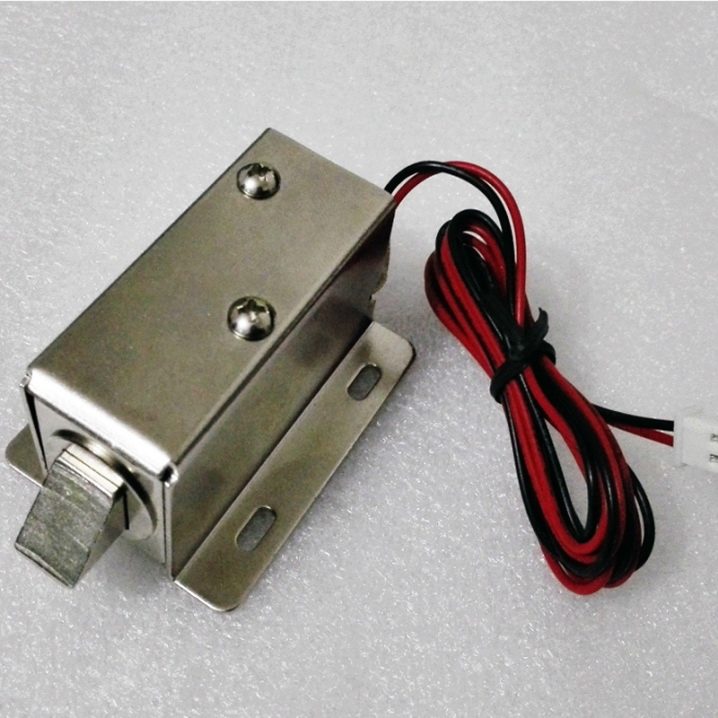
For this reason, when installing EMZ, they are connected to uninterruptible power supplies (UPS).
How to choose an EMZ
When purchasing a device, you need to pay attention to its main characteristics.
- Peel load. EMZs have a high holding force (unit of measurement - kg). In the modern market, products are sold with a pull-off load of 100 to 1000 kg or more. For indoor doors, there are enough products with an indicator equal to 150 kg, for entrance wooden ones - more than 250 kg, and for metal door structures - from 1 ton.
- The value of the residual magnetization. This indicator should be in the range of 1.5 - 3 kg, otherwise there will be difficulties in opening the doors (a lot of effort will be required). Usually the reasons for the appearance of the problem are errors in the technological process or incorrect selection of the magnet.
You will learn more about electromagnetic locks from the video.













The comment was sent successfully.